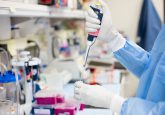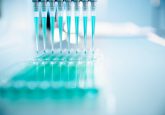Seven new metabolites of anabolic steroid identified

A paper recently published in Drug Testing and Analysis outlines how scientists from the National Anti-Doping Laboratory in Beijing (China) identified previously unknown metabolites of oxymesterone. This could increase the chances of detection in athletes who use this performance-enhancing drug.
Oxymesterone is a commonly abused anabolic androgenic steroid that has been banned by the World Anti-Doping Agency (WADA). The team used human cell cultures and urine samples from two adult males to study the biotransformation of the compound. Following analysis by GC-MS/MS, the total ion chromatographs of the blank and the positive samples were compared, leading to the identification of seven new metabolites.
Although this particular steroid is tested for during doping analysis, laboratories are currently unable to detect it in urine after 2 days. The structures of the seven previously unknown metabolites are yet to be confirmed, however, two have been tentatively assigned. According to the researchers, these two metabolites could facilitate oxymesterone detection in the future, by extending the detection window to 4 days.
There is an ongoing race for anti-doping laboratories to stay ahead of new drugs and masking techniques. David Howman, Director General of the World Anti-Doping Agency, recently noted that as many as 1 in 10 athletes could be taking performance-enhancing drugs, highlighting the need for improved analytical procedures to be developed. The team hopes that their findings will be integrated into future drug testing programs for doping control.
Sources: Yang S, Lu J, Xu Y, Wang X. New oxymesterone metabolites in human by gas chromatography-tandem mass spectrometry and their application for doping control. Drug Test Anal. doi: 10.1002/dta.1836 (2015) (Epub ahead of print); New metabolites found for common anabolic steroid.




